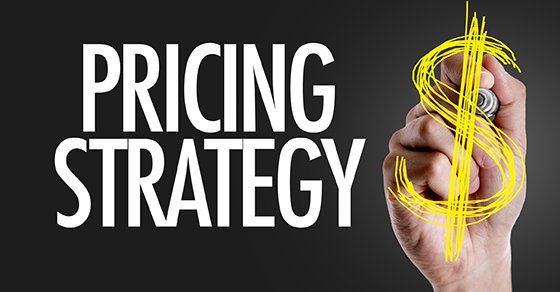Pricing Research to Make Sure the Price is Right
 The promise of the new year lies ahead. One way to help ensure it’s a profitable one is to re-evaluate your company’s pricing strategy. If you have not already, be sure to check out our previous article on how to price a product. You need to devise an approach that considers more than just what it cost you to produce a product or deliver a service; it also must factor in what customers want and value. Pricing research should also consider how much money customers are willing to spend. Then you need to evaluate how competitors price and position their offerings.
The promise of the new year lies ahead. One way to help ensure it’s a profitable one is to re-evaluate your company’s pricing strategy. If you have not already, be sure to check out our previous article on how to price a product. You need to devise an approach that considers more than just what it cost you to produce a product or deliver a service; it also must factor in what customers want and value. Pricing research should also consider how much money customers are willing to spend. Then you need to evaluate how competitors price and position their offerings.
Doing Your Homework
Optimal pricing decisions don’t occur in a vacuum; they require market research. Examples of economical ways smaller businesses can do pricing research on their customers and competitors include:
- Conducting informal focus groups with top customers,
- Sending online surveys to prospective, existing and defecting customers,
- Monitoring social media reviews, and
- Sending free trials in exchange for customer feedback.
It’s also smart to do pricing research by investigating your competitors’ pricing strategies using ethical means. For example, the owner of a restaurant might eat a meal at each of her local competitors to evaluate the menu, decor and service. Or a manufacturer might visit competitors’ websites and purchase comparable products to evaluate quality, timeliness and customer service.
Charging a Premium
Remember, low-cost pricing isn’t the only way to compete. In fact, it can be disastrous for small players in an industry dominated by large conglomerates. Your business can charge higher prices than competitors do if customers think your products and services offer enhanced value.
Suppose you survey customers and discover that they associate your brand with high quality and superior features. If your target market is more image conscious than budget conscious, you can set a premium price to differentiate your offerings. You’ll probably sell fewer units than your low-cost competitors but earn a higher margin on each unit sold. Premium pricing also works for novel or exclusive products that are currently available from few competitors. Or when customers are drawn to the reputation, unique skills or charisma that specific owners or employees possess.
Going in Low
Sometimes setting a low price, at least temporarily, does make sense. It can drive competitors out of the market and build your market share. This technique can also help you survive adverse market conditions. Being a low-cost leader enables your business to capture market share and possibly lower costs through economies of scale. But you’ll earn a lower margin on each unit sold.
Another approach is to discount some loss leader products to draw in buyers and establish brand loyalty in the hope that customers will subsequently buy complementary products and services at higher margins. You also may decide to offer discounts when the seasonal business demand is low or when you want to get rid of less popular models to lower inventory carrying costs.
Evolving through Pricing Research
Do your prices really reflect customer demand and market conditions? Pricing shouldn’t be static. Instead, it should evolve with your business and its industry. Whether you’re doing pricing research for a new product or service for the first time or reviewing your existing pricing strategy, we can help you analyze the pertinent factors and make an optimal decision.
© 2018
